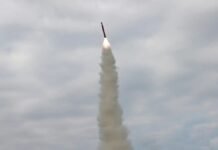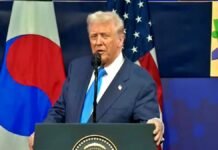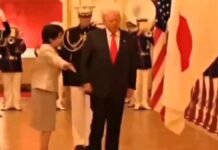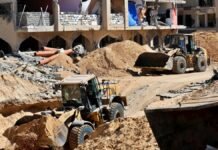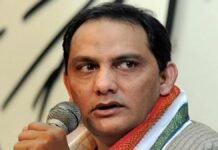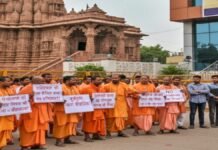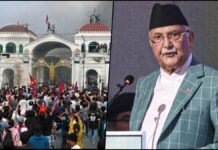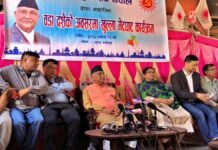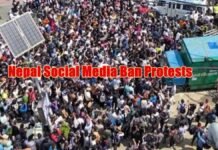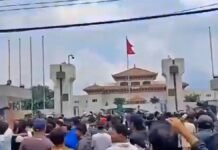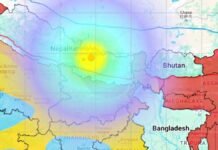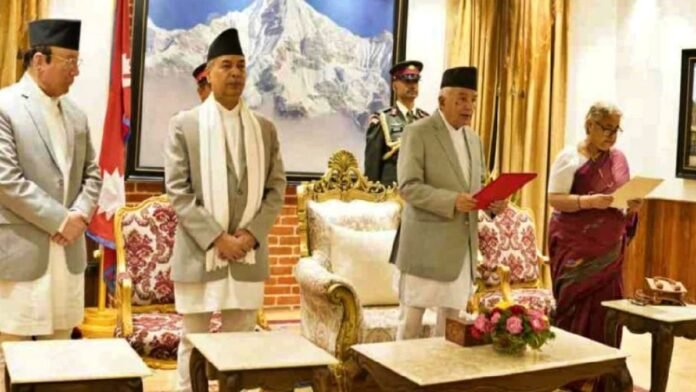
Key Points:
- Nepal’s Election Commission announces parliamentary elections scheduled for March 5, 2026, with voting from 7:00 AM to 5:00 PM
- Sushila Karki, Nepal’s first female Prime Minister, leads caretaker government following K.P. Sharma Oli’s ouster
- Political party registration deadline set between November 16-26; new parties must register by November 15
- Campaign period spans 15 days from February 15 to March 2, 2026
- President Ramchandra Poudel dissolved House of Representatives on September 12, ending months of political instability
- Youth-led Gen Z protests against corruption and social media ban contributed to government change
Kathmandu: Nepal’s Chief Election Commission has officially announced the schedule for crucial House of Representatives elections, setting March 5, 2026, as the polling date following months of political turbulence that culminated in the collapse of K.P. Sharma Oli’s government. The announcement comes as the Himalayan nation seeks to restore democratic stability under the leadership of Sushila Karki, who has made history as Nepal’s first female Prime Minister while heading the interim administration.
Historic Leadership Transition
On September 12, Sushila Karki, 73, was sworn in as Nepal’s Prime Minister, marking a watershed moment in the country’s political history. Her appointment as the first woman to hold the nation’s highest executive office ended weeks of political uncertainty that had gripped Nepal following the dramatic ouster of K.P. Sharma Oli’s controversial government. Karki’s caretaker administration bears the responsibility of ensuring free, fair, and transparent elections while maintaining governmental continuity during the transition period.
The veteran politician brings decades of experience to the role, having navigated Nepal’s complex multi-party democracy through various political upheavals. Her appointment represents both a symbolic breakthrough for gender representation in South Asian politics and a pragmatic choice for steering the country through a sensitive electoral period.
Comprehensive Electoral Timeline
The Election Commission has released a detailed schedule encompassing all critical phases of the electoral process, designed to ensure smooth and transparent democratic proceedings. Political parties seeking to contest must complete registration between November 16 and 26, while newly formed parties face an earlier deadline of November 15 to formalize their status.
For proportional representation seats, a key component of Nepal’s mixed electoral system, political parties must submit their candidate lists on January 2 and 3, 2026. This dual-track system combines direct constituency elections with proportional representation, aiming to balance regional representation with broader ideological diversity in parliament.
The official campaign period will extend for 15 days, commencing February 15 and concluding on March 2, just three days before polling day. This window provides parties limited but focused time to present their manifestos, organize rallies, and engage with voters across Nepal’s diverse geographical terrain, from the Terai plains to mountainous northern regions.
Polling Day Procedures
Election Day has been scheduled for March 5, 2026, with polling stations opening at 7:00 AM and closing at 5:00 PM across the nation. The 10-hour voting window accounts for Nepal’s challenging topography, where some remote constituencies require extended time for voter access and ballot transportation.
The Election Commission has committed to beginning vote counting immediately after polls close on the same day, with preliminary results expected to emerge progressively as counts are completed in different constituencies. This rapid counting process aims to minimize post-election uncertainty and reduce opportunities for electoral manipulation or disputes.
Youth Protests and Political Change
The political transformation leading to these elections was significantly influenced by sustained youth-led protests, particularly from Generation Z activists who mobilized against the Oli government’s policies. Demonstrators raised serious concerns about systemic corruption, governance failures, and controversially, the government’s decision to impose restrictions on social media platforms.
These protests, which at times turned violent, reflected deep frustration among Nepal’s younger population regarding economic opportunities, transparency in governance, and fundamental democratic freedoms. The youth movement’s success in contributing to governmental change represents a significant shift in Nepal’s political dynamics, where traditionally, established party structures and senior leaders dominated decision-making processes.
The social media ban particularly galvanized tech-savvy younger citizens who viewed the restriction as an authoritarian overreach threatening freedom of expression and access to information. This issue became emblematic of broader grievances about governance style and democratic accountability under the previous administration.
Government Commitment to Electoral Integrity
Both the Election Commission and interim Prime Minister Karki have publicly emphasized their commitment to conducting elections on schedule with full transparency and fairness. The caretaker government has assured stakeholders that all necessary logistical, security, and administrative preparations are progressing according to plan.
The Election Commission stated its objective involves maintaining proper coordination among all stakeholders, including political parties, security agencies, civil society organizations, and international observers. This multi-stakeholder approach aims to build confidence in the electoral process and ensure broad acceptance of results regardless of political outcomes.
President Ramchandra Poudel’s decision to dissolve the House of Representatives on September 12 provided the constitutional framework for these elections, formally ending the previous parliamentary term and triggering the mandatory electoral timeline under Nepal’s constitutional provisions.
Regional Political Context
Nepal’s electoral process unfolds against the backdrop of significant political developments across South Asia, including the Bihar Assembly elections in neighboring India. The parallel electoral activities in both nations highlight the region’s vibrant democratic traditions while also presenting logistical coordination challenges for shared border management and security cooperation.
Nepal’s political stability carries implications beyond its borders, particularly for India and China, both of whom maintain significant strategic and economic interests in the landlocked Himalayan nation. The election outcome will likely influence Nepal’s foreign policy orientation and regional alignment in an increasingly competitive geopolitical environment.
Challenges and Opportunities
The caretaker government faces substantial challenges in organizing elections across Nepal’s difficult terrain, which includes some of the world’s highest mountains and most remote villages. Ensuring equal access to polling stations, maintaining security in sensitive regions, and managing logistics for ballot distribution and counting require extensive planning and resources.
However, the electoral process also presents opportunities for democratic renewal. The youth movement’s successful influence on political change suggests potential for broader civic engagement and accountability demands. New political formations may emerge, challenging established parties to address contemporary concerns about corruption, economic development, and social justice.
Path Forward
As Nepal prepares for March elections, the focus shifts to campaign preparations, candidate selection, and policy platform development across the political spectrum. Established parties must reckon with lessons from the Oli government’s downfall while new political actors seek to capitalize on public appetite for change.
The success of Sushila Karki’s historic tenure as Nepal’s first female Prime Minister, albeit in a caretaker capacity, may influence discussions about women’s political representation and leadership. Her performance in managing the transition period could set important precedents for future governance.
The coming months will determine whether Nepal’s democratic institutions can deliver credible elections that restore public confidence and provide a stable foundation for addressing the nation’s developmental and governance challenges. The world watches as this small but strategically significant Himalayan nation navigates another critical democratic transition.



